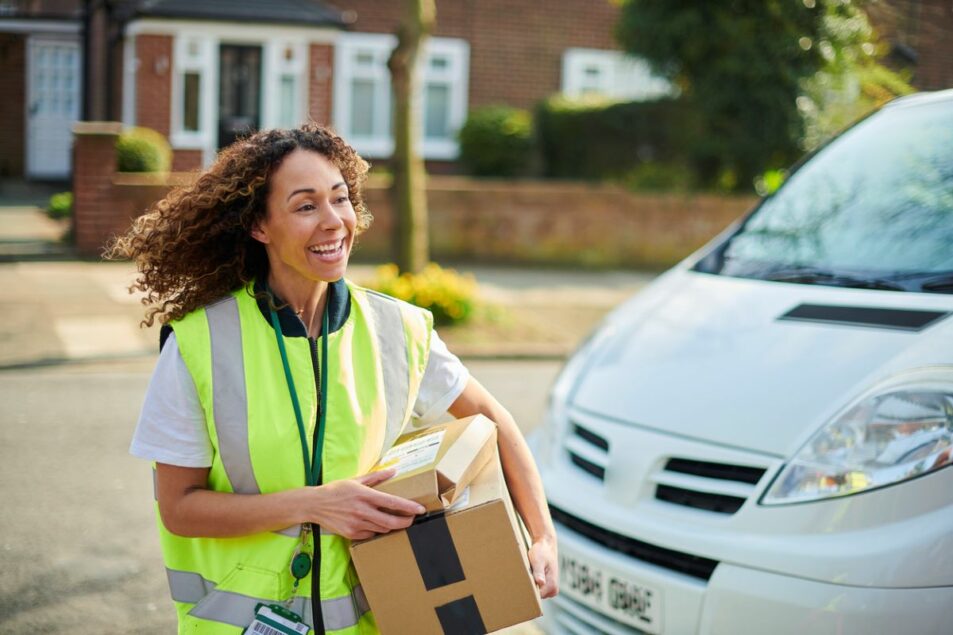[ad_1]
For years, last-mile delivery has been a balancing act — keeping costs low while meeting rising consumer expectations. And that bar keeps rising.
Amazon.com has set the gold standard for delivery, conditioning consumers to expect free and fast shipping. But not every retailer has Amazon’s vast logistics network, deep pockets, or ability to subsidize delivery costs at scale. While shoppers now demand same-day or next-day shipping at no extra charge, many businesses are struggling to keep up. Rising shipping rates, labor shortages, and increasingly complex delivery networks make it difficult for retailers to compete without taking drastic measures.
Complicating matters are the USPS’ recent rate hikes, new tariffs, and the elimination of the de minimis allowance for low-value import shipments that, according to Reuters, caused more than a million packages to sit idle at John F. Kennedy Airport. These new economic policies are forcing retailers of all sizes to rethink how they handle fulfillment, while consumers remain largely unaware of the rising costs behind their “free” shipping.
With these pressures mounting, last-mile delivery strategies must evolve beyond traditional carriers and fixed networks. Following are three ways that retailers can make their last miles more efficient.
Crowdsourced Networks
With traditional carriers facing capacity crunches, the gig economy is stepping up. Crowdsourced networks allow retailers to scale their delivery options based on demand fluctuations and peak seasons. Using these networks doesn’t require detailed forecasting or significant capital expenditures — it allows retailers to fill the gaps of traditional carrier coverage, enabling them to offer faster delivery at competitive rates.
Retailers are also exploring hybrid models where gig drivers handle last-mile fulfillment for everything from small to oversized packages, while traditional carriers focus on bulk orders and long-haul shipments. This approach enables businesses to maintain flexibility in their logistics operations.
By relying on gig networks for quick, localized deliveries and reserving national carriers for larger shipments, retailers can optimize efficiency while minimizing expenses. These evolving strategies highlight how crowdsourced networks are becoming a permanent fixture in last-mile logistics rather than just a stopgap solution.
Advances in Technology
Artificial intelligence and machine learning enable real-time route optimization and delivery density planning. By predicting shipping patterns and integrating multiple shipments into a single, more efficient route, retailers can reduce fuel costs, improve delivery speed, and minimize unnecessary vehicle mileage. AI-driven route planning also allows companies to adapt dynamically to real-world conditions such as traffic congestion and weather disruptions.
Predictive AI can also anticipate demand fluctuations and allocate delivery resources accordingly. By analyzing historical data and real-time inputs, AI models can identify patterns that indicate peak demand periods, allowing businesses to scale their delivery operations proactively. As a result, companies can dynamically adjust pricing, optimize vehicle loads, and integrate various delivery modes — including traditional carriers, crowdsourced networks, and in-house fleets.
AI-driven automation can also streamline warehouse operations by enhancing inventory management and reducing processing times. Smart picking and sorting technologies, combined with robotics, enable retailers to process orders faster and with greater accuracy. These tools also provide better visibility into last-mile operations, helping retailers fine-tune their fulfillment strategies while minimizing costly delays.
Focus on Customer Loyalty
The last mile doesn’t mean the end of the line for consumers’ experience. They expect that if retailers can deliver a product to their doorstep, they should also be able to pick it up seamlessly if a return is necessary. While services like Amazon’s return drop-offs at Whole Foods or UPS locations offer convenience, many shoppers want to avoid that extra step altogether.
Retailers that embrace home pickup for returns, package consolidation and real-time tracking can set themselves apart. Companies testing direct pickup are already seeing improved customer retention. According to the Reverse Logistics Association, 84% of consumers say a positive returns experience encourages them to shop with a retailer again.
At the same time, smart pricing strategies such as free returns for loyal customers and incorporating return costs into membership models help businesses transform returns from a financial burden to a differentiator. In the coming years, retailers that prioritize flexibility and transparency in their delivery and return processes will win over consumers who expect more than just fast shipping.
The last mile is no longer just about moving packages; it’s about mastering unpredictability. As economic pressures mount and consumer behaviors shift, retailers need to rethink fulfillment as a competitive advantage rather than a cost center. And as new technologies and shifting consumer behaviors continue to reshape the industry, retailers must ask themselves: Are we adapting quickly enough? Those who embrace change and invest in smarter logistics today will define the future of e-commerce tomorrow.
Dennis Moon is chief operating officer at Roadie.
[ad_2]
Source link



